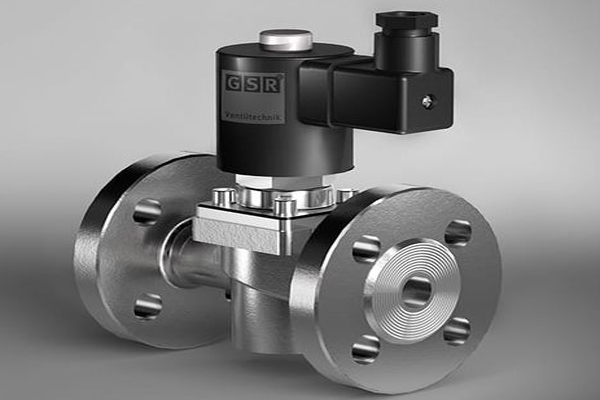Tel : +86-18059296519
Whatsapp : +8618059296519
Email : [email protected]

The faults of GSR stainless steel valve include: the valve cannot be reversed or the reversing action is slow, gas leakage, failure of solenoid pilot valve, etc.
(1) The GSR reversing valve cannot be reversed or the reversing action is slow, which is generally caused by poor lubrication, stuck or damaged spring, oil stain or impurity stuck sliding part, etc. In this regard, first check whether the oil atomizer works normally; Whether the viscosity of lubricating oil is appropriate. If necessary, replace the lubricating oil, clean the sliding part of the change-over valve, or replace the spring and change-over valve.
(2) After long-term use, GSR directional valve is prone to wear of valve core sealing ring and damage of valve rod and valve seat, resulting in gas leakage in the valve, slow action of the valve or failure of normal reversing. At this time, replace the sealing ring, valve rod and valve seat, or replace the directional valve.
(3) If the inlet and exhaust holes of GSR solenoid pilot valve are blocked by oil sludge and other sundries, the sealing is not tight, the movable iron core is stuck, and the circuit is faulty, the directional valve can not be reversed normally. For the first three cases, clean the oil sludge and impurities on the pilot valve and movable iron core. Circuit faults are generally divided into control circuit faults and electromagnetic coil faults. Before checking the circuit fault of GSR stainless steel valve, turn the manual knob of the directional valve for several times to see whether the directional valve can reverse normally under the rated air pressure. If it can reverse normally, the circuit is faulty. During the inspection, the instrument can be used to measure the voltage of the solenoid coil to see whether the rated voltage is reached. If the voltage is too low, further check the power supply in the control circuit and the associated travel switch circuit. If the change-over valve cannot change direction normally under the rated voltage, check whether the connector (plug) of the solenoid coil is loose or not. The method is to unplug the plug and measure the resistance of the coil. If the resistance is too large or too small, the solenoid coil has been damaged and should be replaced.
The material quality of GSR stainless steel valve is enhanced in turn. GSR stainless steel valve application industry: Food and biscuit industry, instant noodles and rice flour industry, all kinds of quick-frozen food dehydration assembly line equipment, glass products industry. It can be used to control the flow of various types of fluids such as air, water, steam, various corrosive media, mud, oil products, liquid metal and radioactive media.
GSR stainless steel valves are widely used in chemical, petrochemical, petroleum, papermaking, mining, electric power, liquefied gas, food, pharmaceutical, water supply and drainage, municipal, mechanical equipment supporting, electronic industry, urban construction and other fields. Valve is a control component in pipeline fluid transmission system. It is used to change the channel section and medium flow direction. It has the functions of diversion, cut-off, regulation, throttling, check, diversion or overflow pressure relief. There are many kinds and specifications of valves used for fluid control, from the simplest stop valve to various valves used in extremely complex automatic control systems. GSR stainless steel valve can be used to control the flow of various types of fluids such as water, steam, oil, gas, mud, various corrosive media, liquid metal and radioactive fluid. The working pressure of the valve can range from 0.0013mpa to 1000MPa, and the working temperature can range from - 269 ℃ to 1430 ℃.
GSR stainless steel valve installation
1. When lifting the GSR valve, the rope shall not be tied to the hand wheel or valve stem to avoid damaging these parts, but shall be tied to the flange.
2. Before installation, check the GSR valve, check the specification and model, and identify whether there is damage, especially for the valve stem. Also turn a few times to see if it is skewed, because the valve rod is most likely to be skewed during transportation. Also remove the sundries in the valve.
3. When installing the flange pneumatic valve, pay attention to tighten the bolts symmetrically and evenly. The valve flange and pipe flange must be parallel with reasonable clearance to avoid excessive pressure and even cracking of the valve. Special attention shall be paid to brittle materials and valves with low strength. For the valve to be welded with the pipe, spot welding shall be carried out first, then the closing parts shall be fully opened, and then welded.
4. When installing the screw port GSR valve, the sealing packing (hemp plus lead oil or PTFE raw material belt) shall be wrapped on the pipe thread and shall not be put into the valve to avoid accumulation in the valve and affect the medium flow.
5. The pipeline connected to the GSR valve must be cleaned. Compressed air can be used to blow away mud, sand, iron oxide chips, welding slag and other sundries. These sundries are not only easy to scratch the sealing surface of the valve, but also block the small valve and make it invalid.